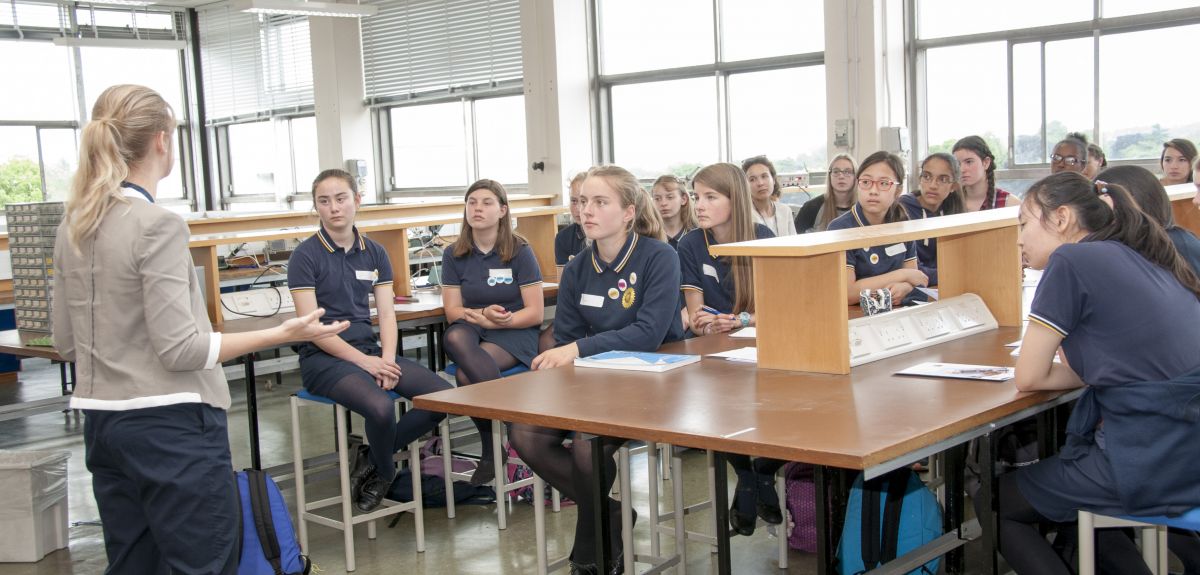
Women in science: why female mentors matter in engineering
It’s no secret that of all the STEM (science, technology, engineering and maths) specialisms, the engineering industry has the biggest diversity problem. Just nine per cent of the UK’s engineers are female, and a disappointing six per cent of those in professional engineering roles are from black and minority ethnic backgrounds.
But, as followers of this series may have noticed, thanks to the combined impact of increased campaign efforts encouraging more women and minorities to enter the field, and the heightened visibility of established female mentors, the scientific community is evolving.
As a Canadian woman of South Asian heritage, Dr Priyanka Dhopade, Senior Research Associate at Oxford University’s Department of Engineering, notes female mentorship as a key factor in both the diversity tide turning, and her own career progression, commenting; ‘Female role models play a big part in a young girl’s life, and whether she can see herself in a certain role. From one of my earliest role models, Roberta Bondar, the first Canadian woman in space, to Professor Alison Noble, an incredible Biomedical engineer, they have been a motivating force in my career. You see someone like you, and just think ‘if she can do it, so can I.’ I want to offer that mentorship to other women and young girls.’
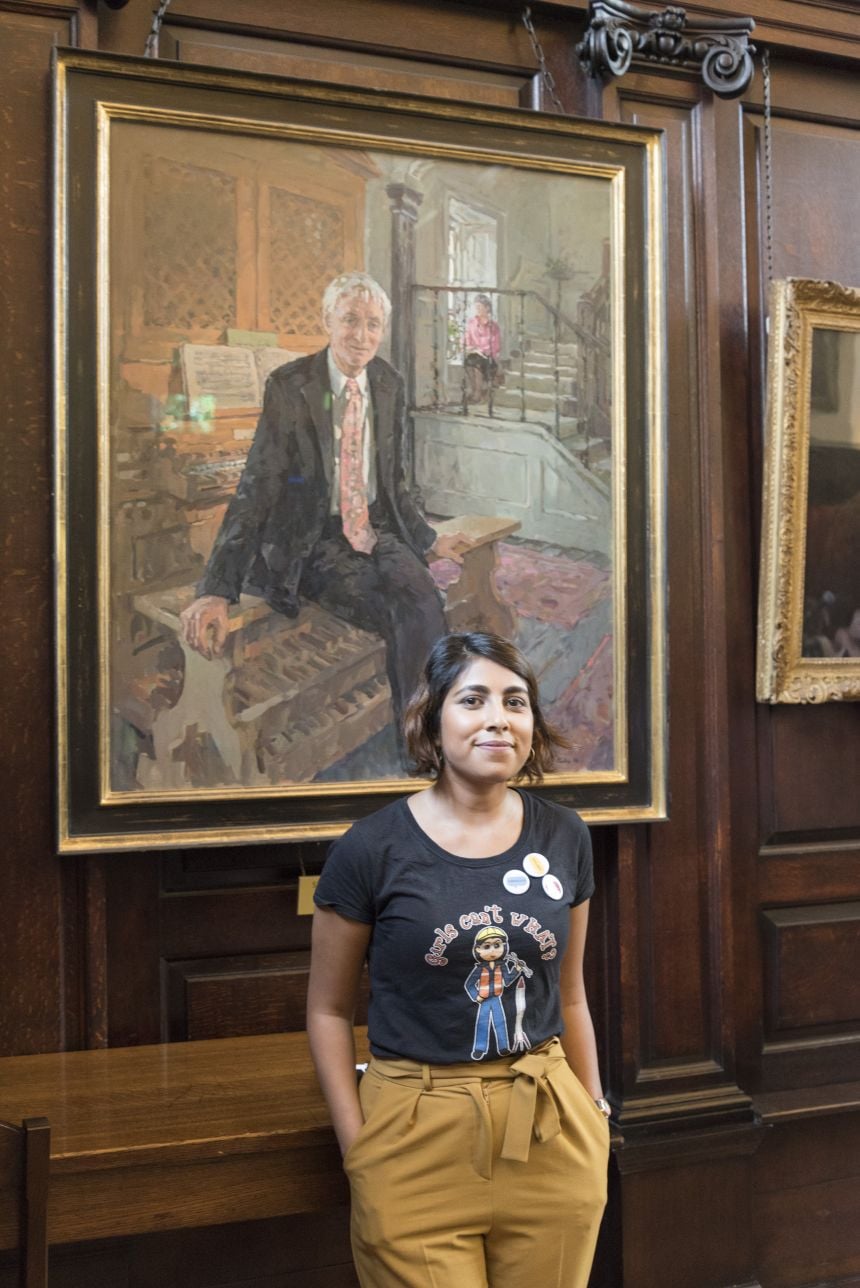 Dr Priyanka Dhopade was just named one of the UK's top 50 female engineers under 35, by the Women's Engineering Society.
Dr Priyanka Dhopade was just named one of the UK's top 50 female engineers under 35, by the Women's Engineering Society.In this spirit, Dr Dhopade, who was chosen by the Women’s Engineering Society, as one of 2017’s top 50 women in engineering under 35, recently organised a community outreach event to celebrate the International Women in Engineering Day (23rd June). During the event, young female science lovers, from across the county, (aged 13-15), had the opportunity to meet and learn from established industry leaders, over afternoon tea. Some attendees talk to Scienceblog about their experience of the day, and why female mentorship is so important to them.
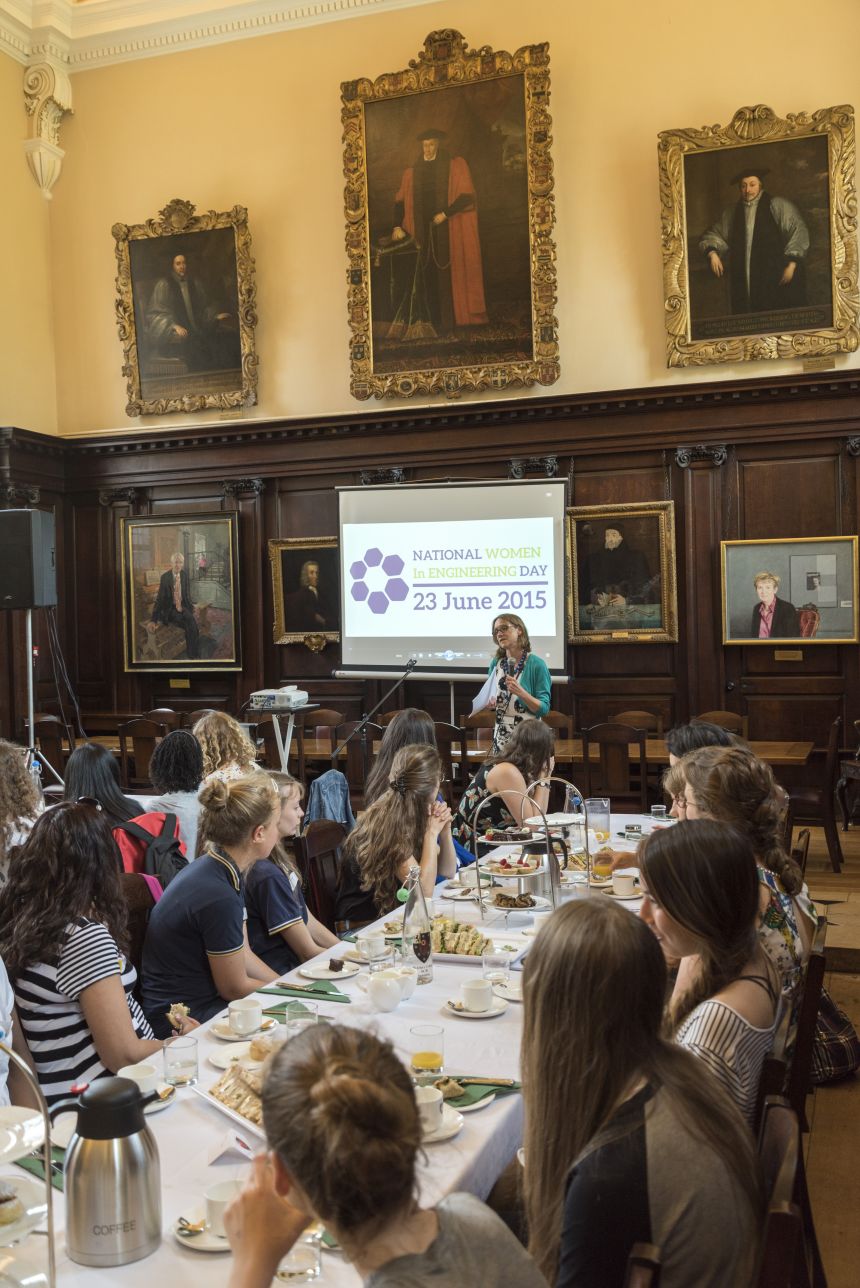 Professor Alison Noble gives a motivating speech at the National Women in Engineering Day Afternoon Tea.
Image credit: Janet Hovard
Professor Alison Noble gives a motivating speech at the National Women in Engineering Day Afternoon Tea.
Image credit: Janet HovardProfessor Alison Noble OBE FREng FRS, the event’s key note speaker, is a Professor of Biomedical Engineering and a co-founder of the medtech spin-out company; Intelligent Ultrasound Ltd. She discusses the vital role of engineers in society and her own personal journey towards being a successful engineer.
How would you describe your work to someone who knows nothing about engineering?
I am a senior academic engineer specialising in ultrasound image analysis, and I split my time between running a large biomedical engineering research group and raising funds for its activities. I also teach at the University, and I am Chief Technology Officer of my spin-out company, supporting the development of its products. I sit on a number of national committees that promote engineering in healthcare, and the commercialisation of science inventions and the growth of small science-based companies.
How has the industry changed during your career?
Image analysis deals with the extraction of meaningful information from ultrasound scans. When I started working in the field about 20 years ago, the academic and commercial focus was on imaging physics and improving image resolution, so that clinicians could see smaller structures and assess organ function. At that time, image analysis was considered a nice add-on, but not seen as having great commercial value. But, now the roles have in many ways reversed, or at least re-balanced. This is largely thanks to image digitisation, and more recently, the availability of large datasets, combined with advances in machine learning algorithms - particularly deep learning. Now, the focus is on how image analysis can be used to support workflow improvements and automatic diagnosis. My field has in a sense come of age, so there are exciting times ahead.
What research achievement are you most proud of?
At every career step there can be something special. For me, now, it has to be my recent election as a Fellow of the Royal Society. It is an incredible honour to receive such prestigious recognition.
What is the biggest challenge you face in your work?
Managing the many responsibilities, requests and expectations of an academic today.
What are your goals for the future?
My advanced European Research Council award is an ambitious project aiming to develop a next generation ultrasound imaging device, which is easier for a non-expert or occasional user to operate, than current systems. It uses machine learning to understand how an expert scans, and to build this knowledge into the ultrasound device. Realisation of this could have a big impact on use of ultrasound in healthcare.
We are also starting new collaborations in the developing world, specifically in Kenya and India. Unlike in the western world, women often do not go for antenatal check-ups during pregnancy. They only seek professional medical help if they feel very unwell. Working with overseas partners will help us to develop and evaluate imaging solutions that meet the unmet clinical need in these countries and could improve pregnancy risk assessment and outcomes in these challenging environments.
Are there any unique challenges to being a woman in engineering?
Two challenges come to mind, firstly, and perhaps surprisingly, as part of the movement to address gender im-balance in engineering, there are now arguably more opportunities presented to women to advance their career than men. But, this also means that women can be over-burdened with requests on their time, so individuals have to try to find a balance that works for them.
Secondly, the number of female directors, or members of senior management teams in companies - especially small ones, is depressingly low. I would like to see more women encouraged to get involved in innovation and set-up their own companies.
What more can be done to address the gender im-balance in engineering?
As with getting women into science, it all starts with school education. We need to teach school children to think creatively and to develop non-academic skills, which might inspire them to consider working in companies, and even setting up their own companies. Universities also need to take entrepreneurship education more seriously as core business.
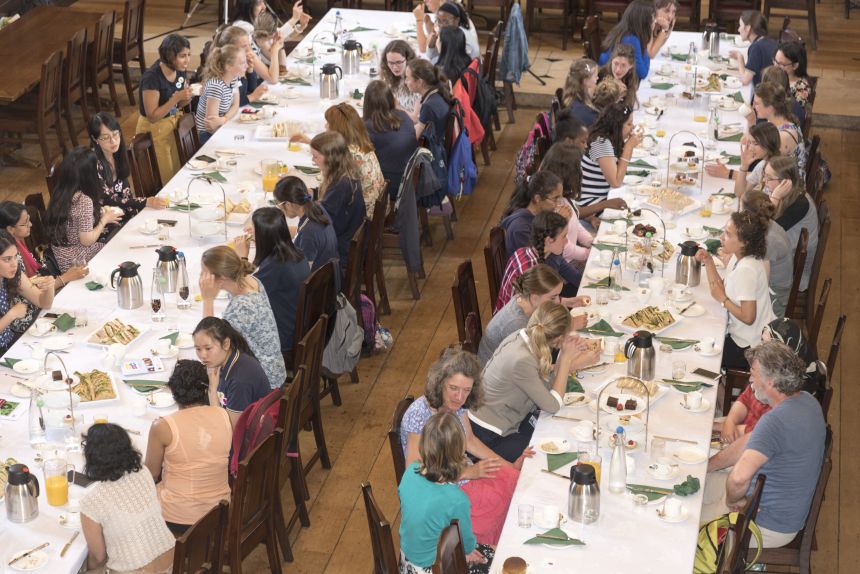 Image credit: Jane Hovard
Image credit: Jane Hovard Why do you think events like today’s International Women in Engineering outreach tea are so important?
Special interest meetings are really important and bring together people with a common interest. For some attendees, they provide an opportunity to network and share experiences. For others, attending a meeting of this kind can potentially change their life.
Gladys Ngetich, Rhodes Scholar, Aerospace Engineering Dphil Student, Department of Engineering, Oxford University
What is your research area?
My research involves developing advanced and more efficient cooling technologies for jet engines. We work in a close partnership with Rolls-Royce Plc and are trying to find a new method of cooling that will use as little air as possible. The principle being that, by improving the overall engine efficiency you reduce emissions.
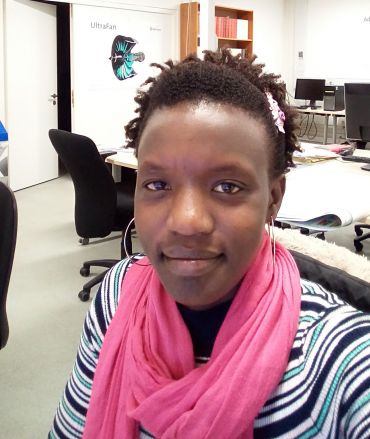 Gladys Ngetich, Rhodes Scholar, Aerospace Engineering Dphil Student, Department of Engineering, Oxford University
Gladys Ngetich, Rhodes Scholar, Aerospace Engineering Dphil Student, Department of Engineering, Oxford University
Did you always want to be an engineer?
Yes! My passion for engineering started when I was at secondary school in Kenya, where I grew up, but I always loved maths and science. My father and two of my brothers are engineers, so it was always a hot topic of conversation at our house.
What is the biggest challenge that you face in your field?
You need persistence and a lot of patience to be an engineer. Sometimes you have an idea that you think is great, but when you run the computer simulation to test it, it fails, so you have to start all over again. It can be a very long process that requires a lot of patience.
What are your goals long term?
I just want to be useful. Providing engineering solutions to all sorts of real world problems.
Are there any unique challenges to being a woman in science?
There is definitely a difference between being a man or a woman in engineering, and not just at Oxford. Even during my Undergraduate degree in Kenya, in a class of 80, I was one of eight women - that’s a ratio of one to ten.
Whether because of gender, or skin colour, when you are a minority it can be really lonely and challenging. You feel awkward, and it becomes about proving yourself. Proving to yourself and your classmates that you have as much right to be there as they do. At least half of the women in my class graduated with a distinction. It’s the same at Oxford, in a lab of about 30 DPhil students, I am one of three women, and one of two black students, so it’s a double challenge.
How can events like this support change in the industry?
I think there are lots of solutions, but for me, it is about encouraging young girls and talking to them from a young age about the importance of female role models and following your dreams. We have to really put the effort into supporting them to take STEM related subjects.
Some of the girls here today perhaps have never thought about a career in engineering, but after hearing Alison or some of the other speakers, they will start seeing it as a real possibility.
Never seeing someone that looks like you, working in the field that you dream of, can create a feeling that it’s not for you. Just being able to talk to, and even just see female and minority engineers makes all the difference.
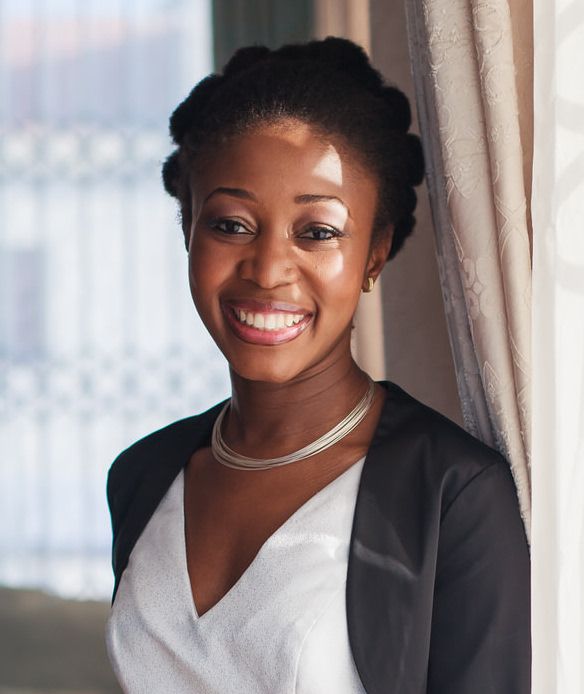 Dr. Ana Namburete, Royal Academy Engineering (RAEng) Research Fellow, Department of Engineering
Dr. Ana Namburete, Royal Academy Engineering (RAEng) Research Fellow, Department of Engineering Dr. Ana Namburete, Royal Academy Engineering (RAEng) Research Fellow, Department of Engineering
Did you always know you wanted to be an engineer?
I actually grew up thinking that I was going to be the first doctor in my family. I am from Mozambique, and my parents’ generation were the first to be able to choose their own career after Colonial Independence. My grandfather had always wanted to become a doctor, but not had that choice open to him. He spotted my passion for biology and helping people, and urged me to become a doctor.
I was focused on that goal at school, but during my gap year I volunteered at a clinic, where I realised that the lifestyle of a doctor did not actually suit me. There were new machines coming in all the time, but nobody spoke English well enough to translate the manuals. I speak fluent English and Portuguese, so I took on that role. While I was setting up the machines, I realised how much I liked the technical side of understanding how machines work. That was when I decided that I wanted to be an engineer.
I had already applied to university medical programmes. But, I was lucky, I was accepted into Simon Fraser University, a liberal arts university in Canada, where I could change my degree. I switched to the Biomedical Engineering course, and have never looked back.
What motivates you?
I recently won a Research Fellowship with the Royal Academy of Engineering to look at how we can automate fetal ultrasound images. Most of the structural development of the brain happens during pregnancy so there is big potential for impact. I created algorithms that can learn the normal pattern of prenatal brain development, detecting abnormal development in the process. Because ideally, if you can detect abnormalities early, you have the opportunity to intervene.
Ultrasound is portable and affordable, so useful for community services. If we automate the analysis, diagnosis and detection of brain structures, then community health workers can operate the machine and collect the images. Our algorithms do the hard work so they do not have to.
What do you like most about being an engineer?
I love being able to work with different people, understanding and translating their needs, into solutions. I also get to travel lots – Malawi, most recently. I visited clinics to assess their ultrasound needs and work out plausible interventions that we could provide for them.
Are there any unique challenges to being a woman in engineering?
Well, there are not very many of us, and that’s a problem. When I did my undergraduate degree, there were 20 women out of 400 students in the entire engineering department. A really bad ratio - and I was the only black woman in the program. I couldn’t help but feel different.
Inclusion is a real issue. But, that being said, I have rarely felt that doors are closed to me - particularly at Oxford, where I have always felt supported. My chances of winning my Fellowship were actually increased by having the support of the department, and Professor Noble my as my mentor and role model.
What needs to change to level the engineering playing field?
I think we need to see more role models, and for that, we need more women in the industry in general. Girls decide at a young age whether STEM is not for them, and we need to understand why that is.
The way we interact with technology in general today is completely different to when I was a teenager. Now everyone is a digital native, interacting with smart phoned and the web from a young age. This is good news for STEM.
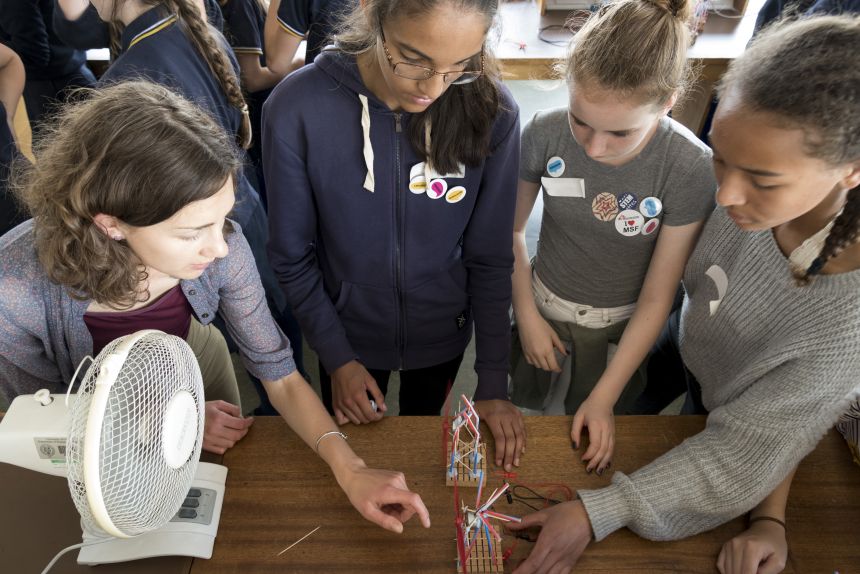 The girls' get hands-on, building a wind turbine.
The girls' get hands-on, building a wind turbine.
And what do the scientists of tomorrow think?
Mary Lee, 14 and Kitty Joyce, 15, Oxford High School, Oxford
‘We have really enjoyed this event and having the chance to decide what we want to do. We know that there are more men in science than there are women, but would never let this hold us back. Girls should be encouraged to do what they want, and women should have the same opportunities as men.
It has been great to meet new people, and take part in the practical workshop (led by Gabby Bouchard, Outreach Officer at the Department of Engineering). It was fun building the wind turbine.
‘We don’t learn about engineering at school and we should. We are here because we love science, but until today had never really thought about engineering as a job - but, that could change now.’
Sol Zee, 13 and Carys-Anne,14, Cherwell School, Oxford
‘It has been great to meet so many new people, and talk to other girls that love science too. We have a female science teacher, but listening to, and hearing how much the women here have achieved is really inspiring. It makes you excited that if you work hard, that could be you one day. We noticed that there are so many jobs in engineering that we did not know anything about, and will ask more questions about now.’